Table of Contents Show
Exploring the varied landscapes of Utah can be thrilling. Everywhere you look, the geology changes.
From hoodoos in tight canyons to grand mountain scenery, rivers that meander through verdant prairies, to depressions in the earth’s crust, Utah has some of the most compelling destinations.
Nowhere is that more evident than in Utah’s five national parks.
How Many National Parks Are in Utah?
There are five national parks in Utah to entice visitors worldwide to explore the state’s incredible topography. These five gems of the national park system include some of the most unusual rock features and formations, twisting canyons carved by rivers, and desert landscapes created by winds.
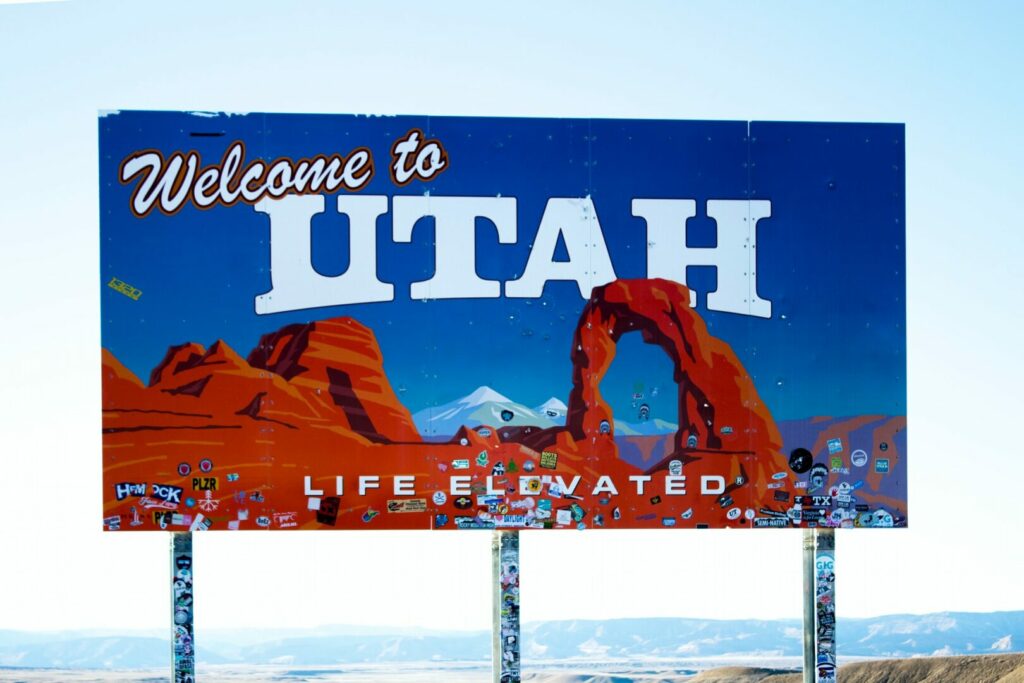
What Are the Mighty 5?
Most adventurers know of Zion, Bryce, Arches, Canyonlands, and Capitol Reef National Parks by their stunning vistas and connections to nature. Many visitors take advantage of outdoor activities like hiking and biking as an escape.
Take a look at what makes each of the five national parks in Utah so mesmerizing:
Zion National Park in Springdale, UT
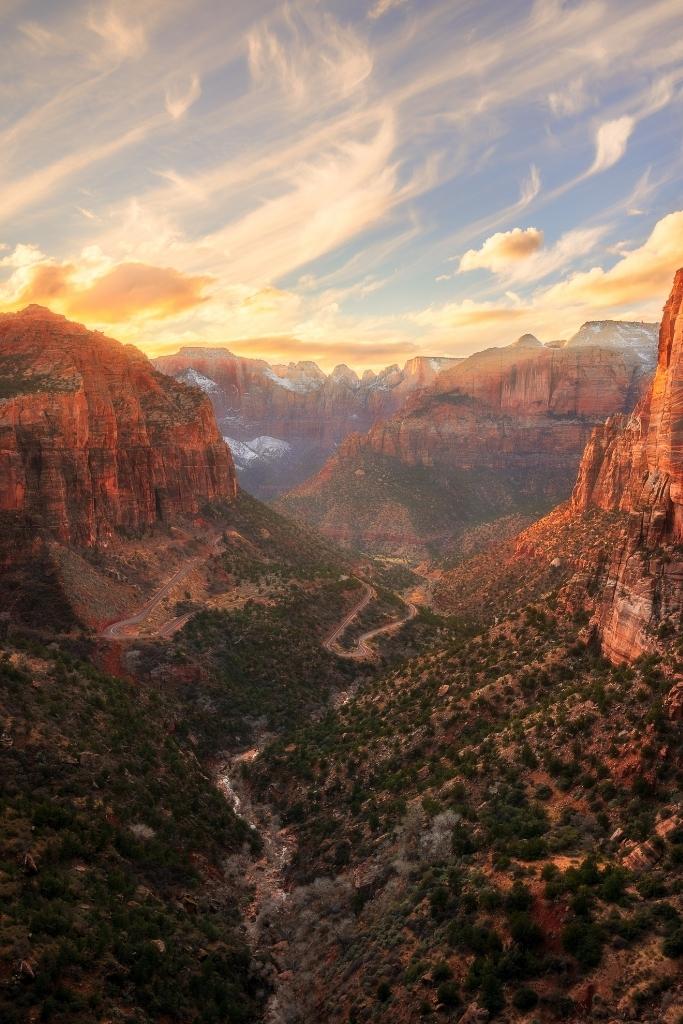
Must Hike Trails: Don’t miss the Hidden Canyon Trail as you squeeze through rock portals, spot potholes in sandstone shelves, and ascend the face of a rock wall to arrive at the valley overlook. This hike is rated as “strenuous” and is not for children or those fearful of heights.
The Narrows, another “strenuous” hike, is 9.4 miles long round trip and will have you wading and swimming in a river for most of its length through narrow sandstone walls.
The West Rim Trail will take hikers along the rim of Phantom and Wildcat Canyons before dropping into the main canyon of Zion. It is 19 miles long, with the last 4.4 miles steep and strenuous.
Bonus Trail: If you don’t have a fear of heights, you can take on the famous Angels Landing trail in Zion as well. Be sure to check out our guide on this scary hike first: Angels Landing Hike: Know Before You Go.
About The Park: Travel through tunnels and slot canyons, hike to the heights, or walk through a valley of sandstone cliffs in Utah’s first national park. Zion Canyon runs through the park with expansive views, rugged terrain, and towering peaks.
Know Before You Go: Hiking may be the best way to experience Zion. Because of the park’s popularity, a shuttle bus carries visitors throughout the park, with stops at most trailheads.
Be sure to check the schedule before planning your day’s adventures. Also, know the skill level of each trail and which ones are not suggested for children or those with acrophobia.
Pro Tip: Learn how to plan an RV trip to Utah’s incredible national parks.
Bryce Canyon National Park in Bryce, UT
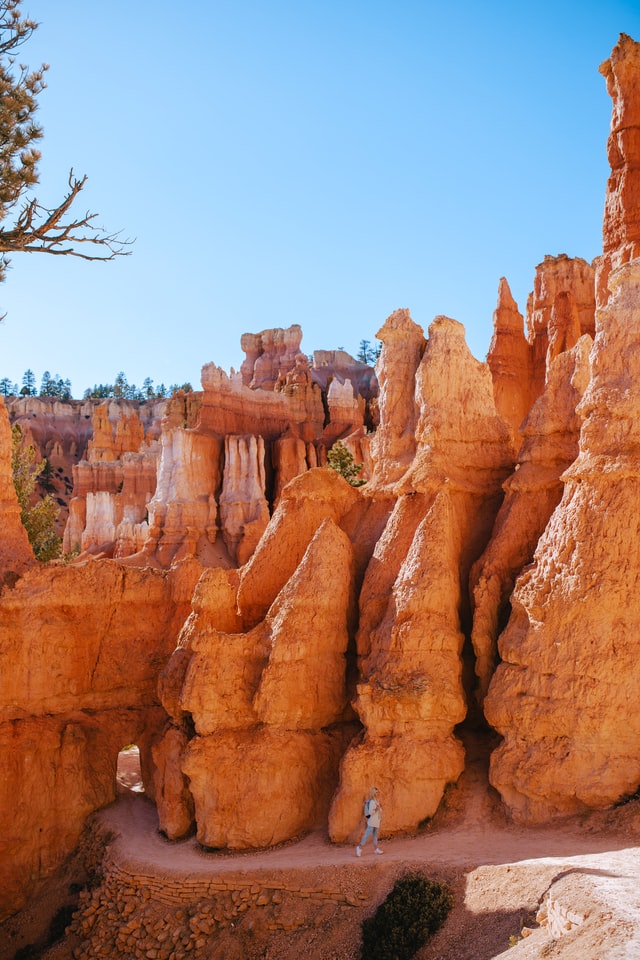
Must Hike Trails: You can combine a hike through the Queens Garden and Navajo Loop Trails as a completed loop. Queens Garden is the easiest way into the canyon and is 1.8 miles long. Navajo Loop is steep but shorter at 1.3 miles, and both sections are considered a moderate hike. This is by far the most popular trail in the park.
The Fairyland Loop Trail is 9 miles long and a strenuous hike with significant payoffs. You will spot the Tower Bridge and some of the larger hoodoos on this less populated hike.
About The Park: Bryce Canyon is in several large amphitheaters rather than an actual canyon. It is filled with eroded rock that left hoodoos and pinnacles standing in a deep basin. These formations are especially eye-catching because they retain the colorful layers of the stone in the surrounding mesas.
Know Before You Go: Bryce Canyon has labeled overlooks based on a timeframe for shooting great images at each. Sunrise and Sunset Points are two examples of this, as is Inspiration Point!
Arches National Park in Moab, UT
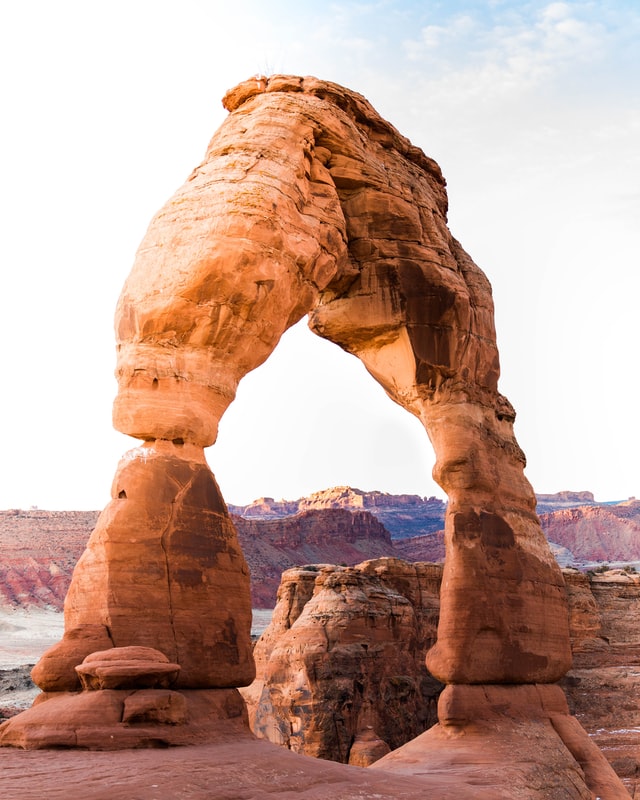
Must Hike Trails: The most popular trail in Arches National Park, Utah, leads to the Delicate Arch. The start of this picturesque location is on a sandstone dome. Hikers venture along a ledge before breaking out onto the top of a basin, with the arch across the way. It can be a stunning sight and worth the effort.
Devils Garden Loop is at the very end of the main park road, with several trails to geologic formations. The Loop Trail is level in most spots, taking visitors through sandstone fins that sit on an edge, past several arches, and through juniper landscapes.
Landscape Arch is one of the trails on the Devil’s Garden Loop. Its rating is an easy trail, taking hikers to the longest rock arch in North America, with an opening of 306 feet. This fragile arch has a very narrow taper of 6 feet in width at one point.
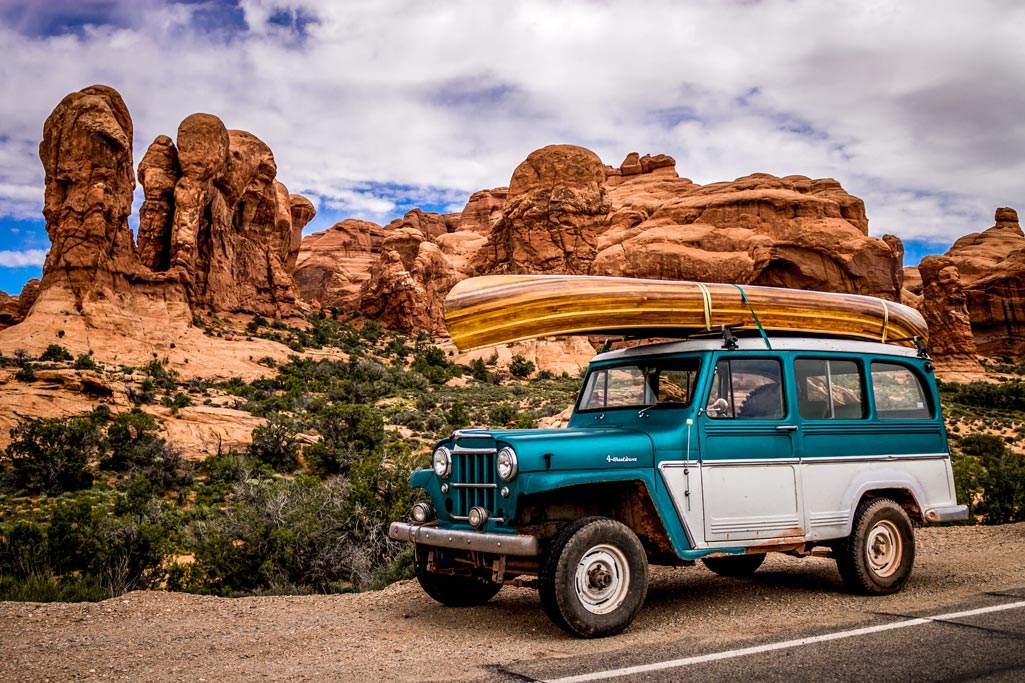
About The Park: Arches is one of the busiest parks in the nation, as travelers learned of its charms in the book, Desert Solitaire, written by famed Utah author and former Arches park ranger, Edward Abbey. There is only one road going through the park, which dead ends, making traffic rather busy during summer days and holidays.
Its spectacular collection of sandstone arches, fins, and rock formations may be unlike anywhere else in the world. A visit shouldn’t be complete without a hike to see Delicate Arch, Balanced Rock, The Three Gossips, The Fiery Furnace, and Park Avenue.
Know Before You Go: Because of its popularity, Arches requires a timed entry ticket if visiting between April and October. You can acquire one up to three months in advance of your visit at Recreation.gov.
Did You Know? Moab, UT, is located in both Arches and Canyonlands National Parks! See what kind of epic adventures you can get into in Moab.
Canyonlands National Park in Moab, UT
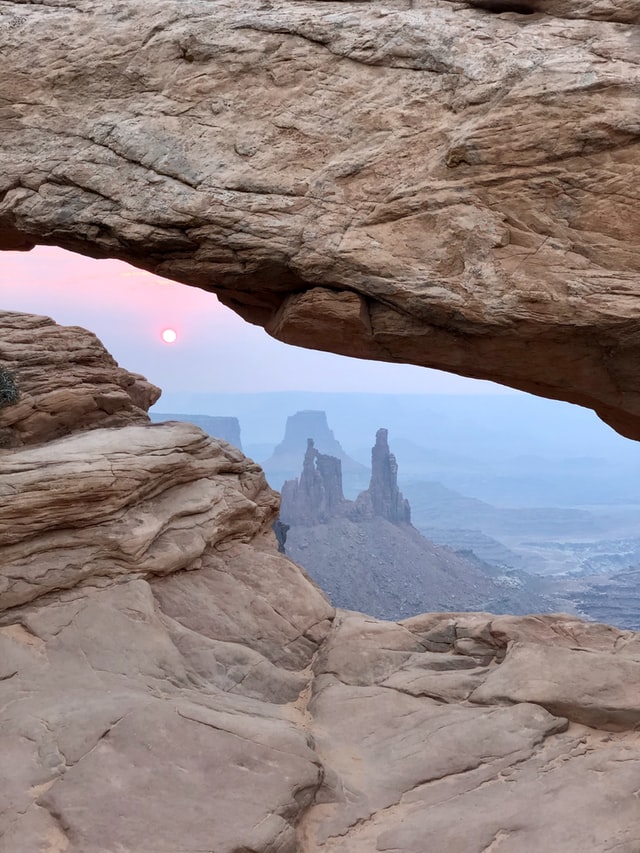
Must Hike Trails: The Mesa Arch Trail is on the Island in the Sky District of Canyonlands. It is an easy half-mile hike to an arch that overlooks the canyons, as well as the LaSal Mountains. It is the perfect spot for a great sunrise photograph, but you will have to fight off all the other photographers there.
White Rim Overlook and Murphy Point Trails are at the end of the road on Island in the Sky District. Both are great vantage points for an overview of Canyonlands and the white rim that runs along the top edge of the sandstone canyons.
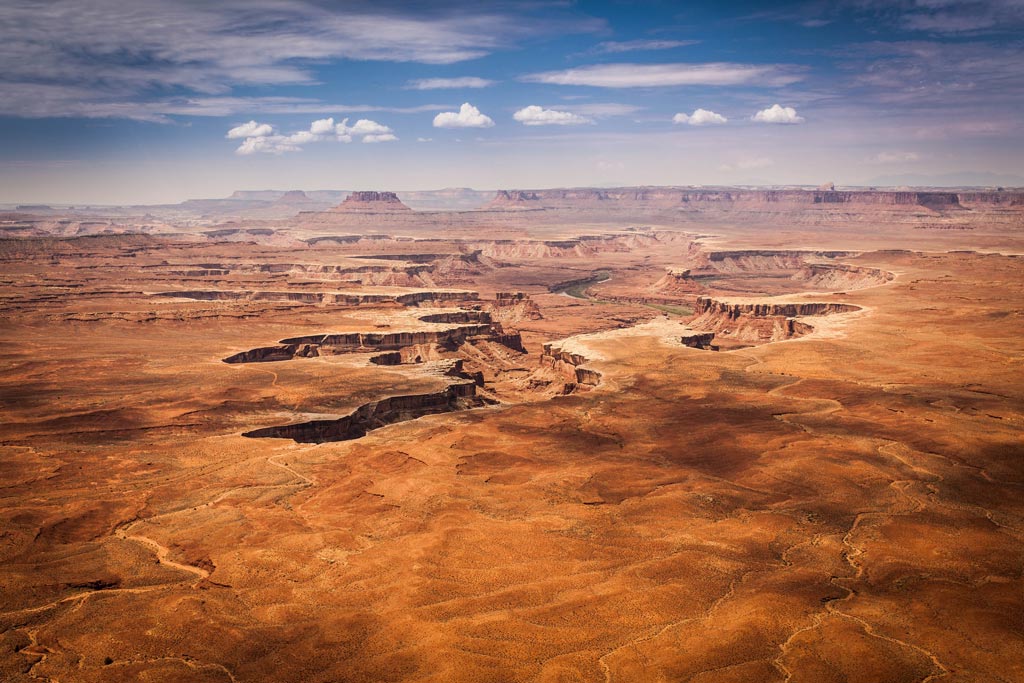
About The Park: With three different regions, Canyonlands National Park is spread throughout eastern Utah from the central to the southern part of the state. The Colorado and Green Rivers form these vast canyons, mazes, mesas, and rock formations. It is a testimony to the beauty of the red rock desert. Many visitors to this national park in Utah enjoy the enormous mountain biking trails and hiking, while others explore nearby petroglyphs or raft down the river.
Know Before You Go: Plan for desert hiking without support. Many sections of Canyonlands are incredibly remote, so be prepared with water and emergency first-aid equipment. This park is a place to enjoy the solitude and scenery of Utah’s high desert landscapes.
Capitol Reef National Park in Torrey, UT
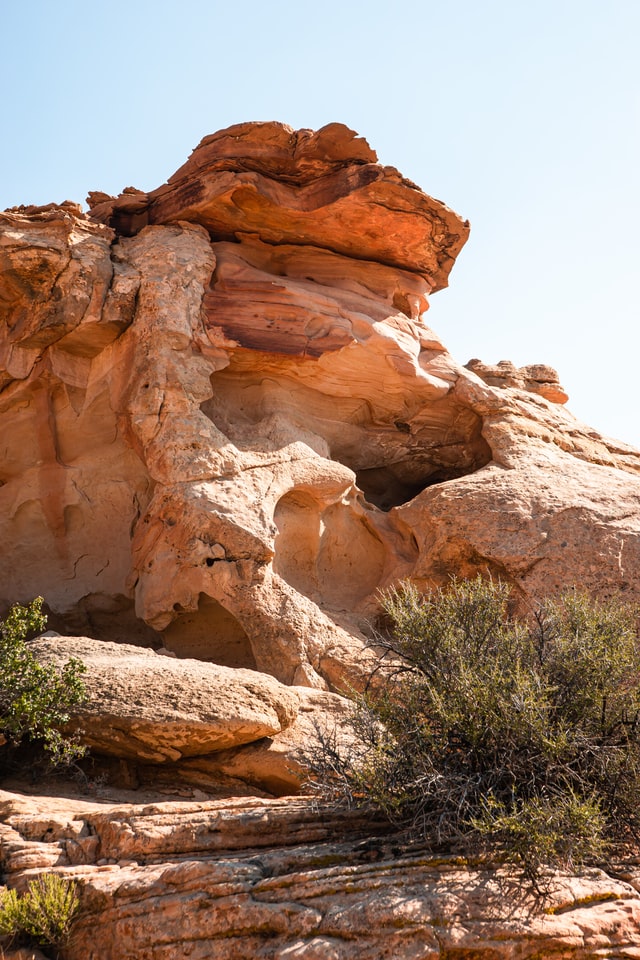
Must Hike Trails: Hickman Bridge is one of the most popular trails to a natural stone bridge in this national park in Utah. The trail is less than one mile and is rated a moderate hike with some elevation. Hikers will arrive at the 133 foot-long Hickman Bridge and a great overlook of surrounding canyons.
Cassidy Arch lies at the end of another strenuous trail. There, hikers follow the path to the arch and some fabulous views of the canyons below.
For a seven-mile strenuous hike to capture a view of the sunset, you could be breathing hard on the Chimney Rock Loop Trail, but you may also be exuberant over the landscapes you’ll find. The Waterpocket Fold is the star of the show with cliffside views.
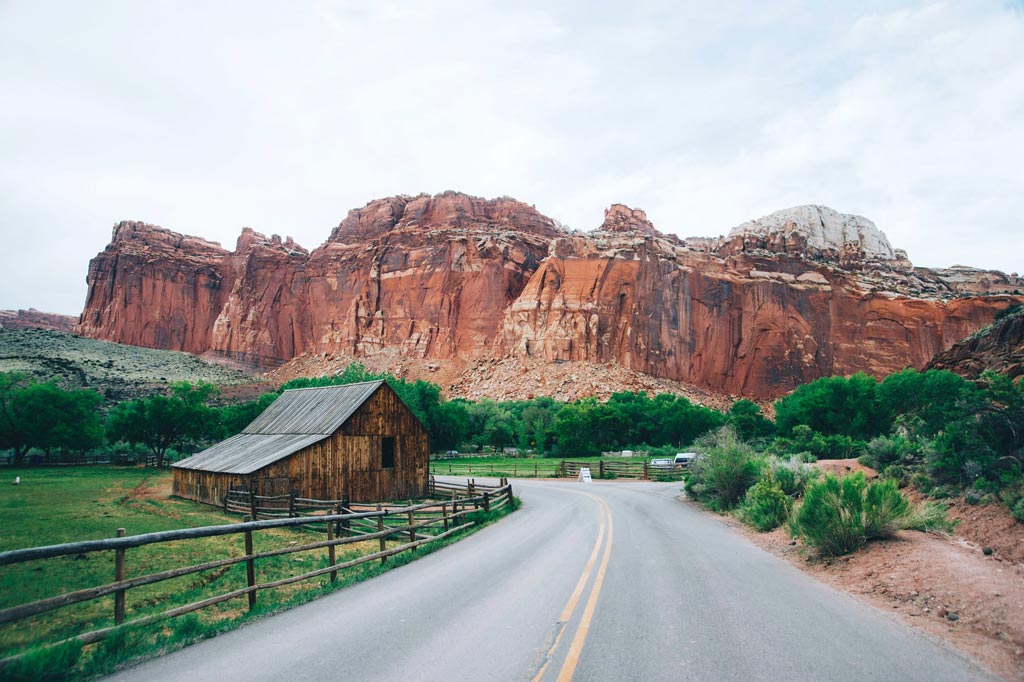
About The Park: Capitol Reef National Park is in south-central Utah and is full of domes, bridges, arches, and canyons that formed across a 100-mile-long upheaval in the Earth’s crust called the Waterpocket Fold. The park stretches across four counties and encompasses several geologic changes with fantastic rock formations and pockets.
Know Before You Go: Capitol Reef is in a remote location, and to explore some of the canyons or do backcountry camping, you must obtain permits. You can find permits at the visitor center. Because the park gets winter snow, many sites can be closed due to weather, so check with rangers on closers.
Your Next Adventure: When you’re done exploring Utah, head southeast to Carlsbad Caverns National Park to witness the awe-inspiring bat flight!
What Is the Best Time Of Year to Visit National Parks in Utah?
Because most of Utah’s topography is considered high desert, the five national parks are most enjoyable when the weather is temperate. Visitors seem to pour into these destinations in April when spring temperatures reach into the 70’s and 80’s. Some enjoy the heat of summer to hike higher elevations or explore the rivers with rafting and fishing.
But most travelers head out of the Utah parks by the end of September. Some may leave because they turn off the water at campsites in anticipation of freezing temperatures. Others head to the Wasatch Mountains for winter adventures.
What Is the Most Visited National Park in Utah?
Out of the five national parks in Utah, Zion is the most popular, with 4.5 million visitors each year. Its numerous hiking trails, adventures through rivers and canyons, and overwhelming scenery make it hard to resist.
When you compare it to other national parks, it still rates highly as the fourth busiest in the country.
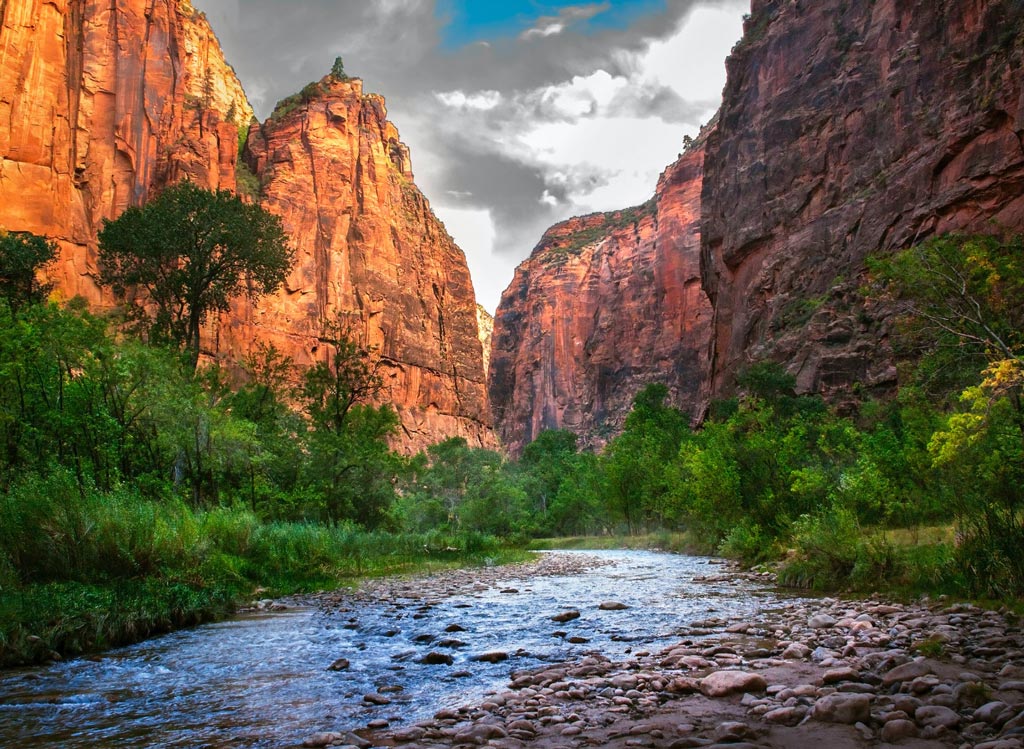
Remember to Leave No Trace
When visiting any of the national parks in Utah, be sure to practice the “Leave No Trace” principles. Please try to include diligent planning ahead of your trip. Travel and camp on durable surfaces, properly dispose of waste, and leave whatever you find so that future visitors can experience it, too.
Also, every traveler should minimize any sign of campfires you have. Respect the local wildlife by giving them a wide berth and not feeding them, and finally, be considerate of other park visitors. These principles make sure that everyone can enjoy the protected lands of our national parks.
Don’t Forget Your National Park Pass
Utah is full of wonders, and five lie in the national parks. Each has its flavor, highlighting surrounding cultures from each area, geology formed over millions of years, and incredible vistas. A National Park Pass will give you access to these five extraordinary places without the need to leave the Beehive State!




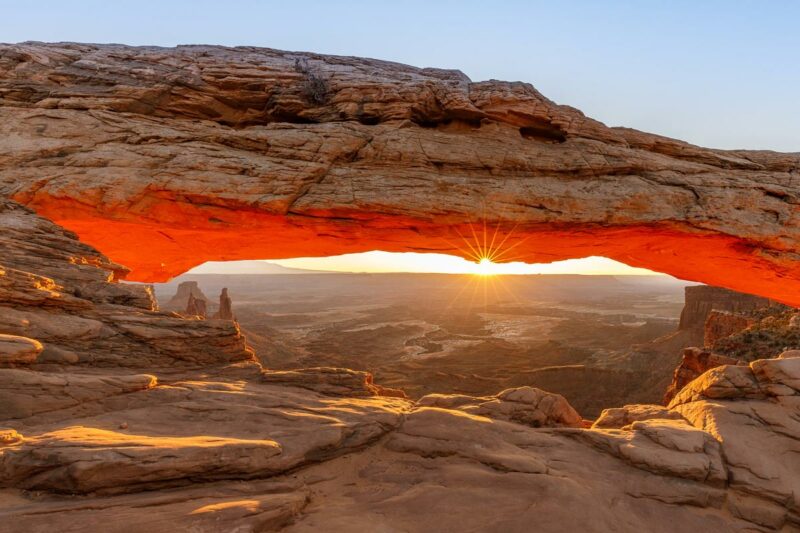
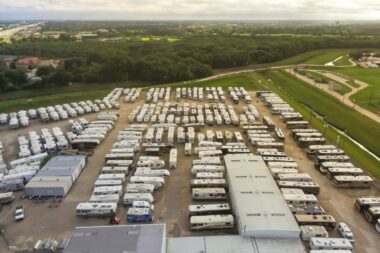

Yes these are great parks BUT good luck getting permits to enter. Also if you like crowds, these are the places to visit. Best time to avoid issues are late Fall, Winter and early Spring. Maybe not the best weather, but a lot less people.